During the procedure, the laser will create a refractive lenticule (a disc-shaped piece of tissue) and small incision (roughly 2-4mm) in the cornea. The lenticule is then removed through the keyhole incision, which changes the curvature of the cornea to correct the patient’s vision. Lid-guards will be positioned to keep eyes open without any accidental blinking.
SAMYAK DRISHTI– FIRST CENTRE IN INDIA (27TH CENTRE IN THE WORLD) TO OFFER SMILE SINCE 2011
Carl Zeiss has a reputation for quality and precision in optics since 170 years. It has been at the forefront of advances in laser vision correction since the last 25 years. Refractive lenticule extraction has been under development since 2006.
The doctors at Samyak Drishti started SMILE in the early part of 2011 well before it was launched by Carl Zeiss worldwide towards the end of 2011. In fact USFDA approval for SMILE came much later in September 2016. They enjoyed the privilege of being early adopters of this technique because of their stellar reputation, foresight, skills and surgical experience.
Thus, Samyak Drishti became the first centre in India and the 27th centre in the world to offer SMILE in 2011.
Now that's something to smile about.
As we celebrate our 10th year of SMILE, it is now available at more than a 1000 premium LASIK centres worldwide.
What is SMILE?
SMILE is a revolutionary minimalistic procedure that is changing the face of vision correction. It is an advanced laser technique designed to overcome and exceed the limitations of traditional vision correction techniques such as LASIK for patients with myopia (short-sightedness) and astigmatism.
It is the first and, until now, the only solution for performing Small Incision Lenticule Extraction (SMILE) a bladeless, flapless, all femtosecond, minimally invasive and minimal access procedure for vision correction.
The pioneering combination of the precise femtosecond laser and absence of a flap bring benefits such as shorter treatment times, greater comfort, faster recovery, fewer postoperative precautions, less dry eye, greater precision, excellent outcomes, higher predictability and most importantly, superior long-term safety. This makes it a superior solution for those with high corrections, thin corneas, contact-lens intolerance, dry eyes and active lifestyles including contact-sports.
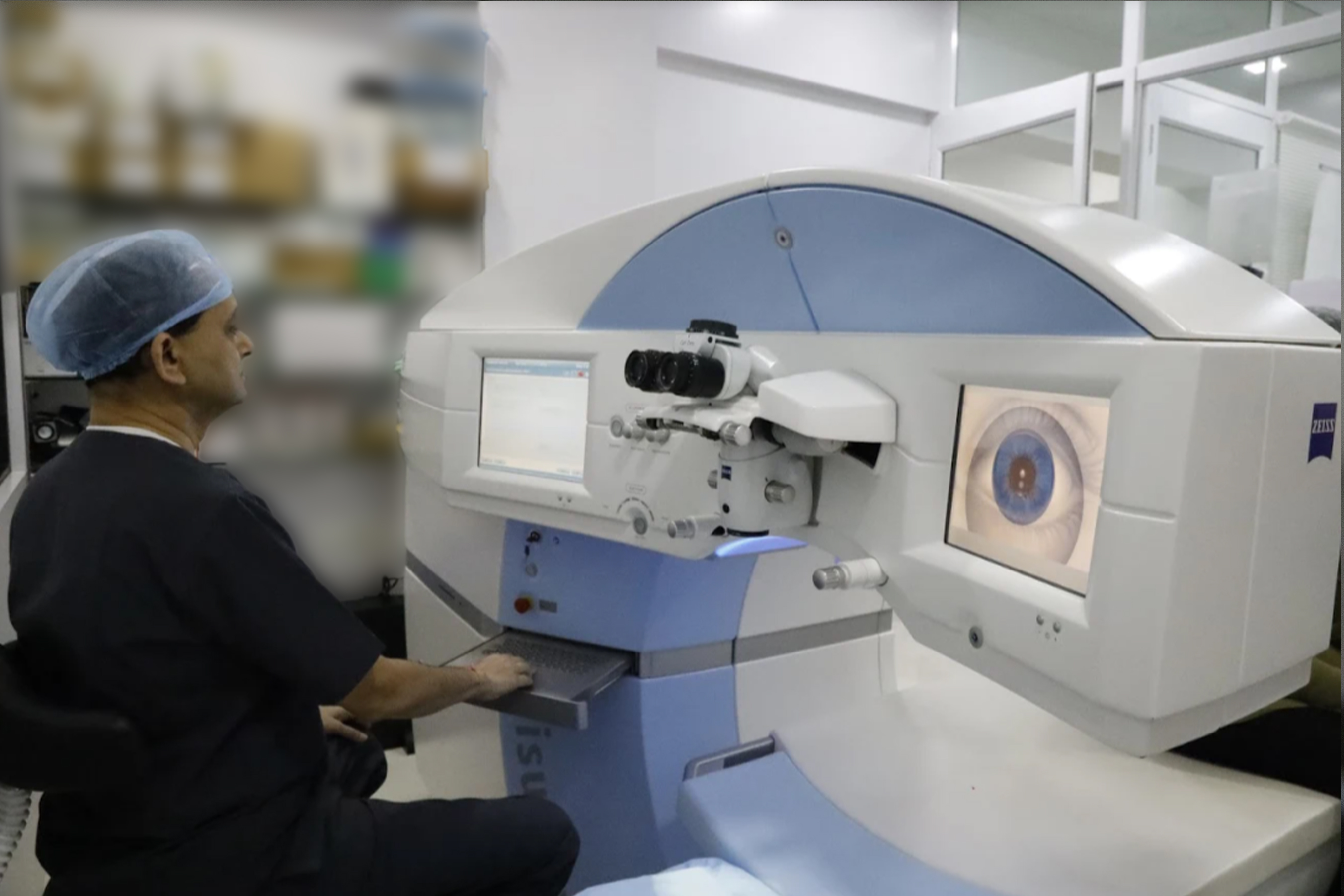
SMILE can treat a wide range of prescriptions from -1 to -10 D sphere and upto -5 D of cylinder.
Step 1
The VisuMax femtosecond laser gently creates a thin lenticule and a small incision measuring less than 4 mm in the intact cornea in less than 30 seconds.
Step 2
The lenticule is gently removed through the small incision with only minimal disruption to the corneal biomechanics as no flap is cut.
Step 3
The minimally invasive removal of the lenticule changes the shape of the cornea, correcting the refractive error of the eye.
WHAT TO EXPECT FROM SMILE?
• Typically, there may be some discomfort on the day of surgery.
• Patients are advised to rest on the day of surgery for 4 to 5 hours, after which they can resume activities at home
• We allow patients to discontinue all precautions and resume normal activities within a day or two.
• Vision recovery generally occurs within a few weeks after surgery.
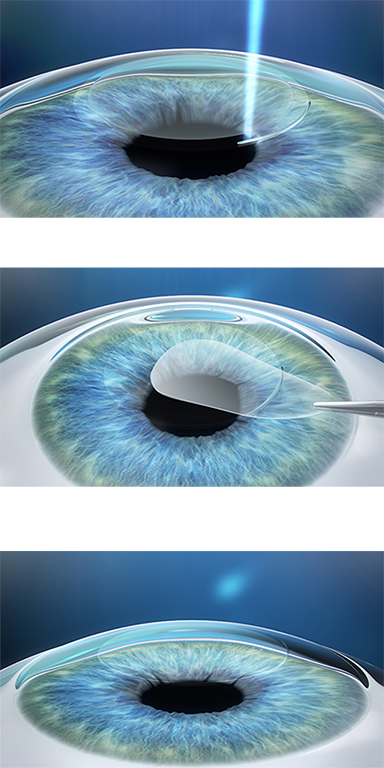
THE SMILE DIFFERENCE
Laser refractive surgery has been widely used in the last 25 years to correct vision disorders such as myopia (short-sightedness), hyperopia (long-sightedness) and astigmatism (blurred vision). In a journey that began with PRK, followed by LASIK and Femto-LASIK, SMILE is at the forefront of the 3rd generation of laser vision correction, and a ground-breaking treatment that has redefined vision correction forever.
With SMILE, the entire correction is performed as a single-step without the creation of a flap: on one laser, with one treatment plan and one laser process. It is the first and only minimally invasive minimal access method of correcting vision.
Traditional procedures involve using a microkeratome (LASIK) or a femtosecond laser (Femto-LASIK) to create a flap which is folded back and an excimer laser is used to reshape the internal cornea.
During SMILE, a high-performance femtosecond laser creates a lenticule (tissue disc) inside the cornea which is removed through a small 4mm incision. The surface of the cornea is almost untouched and there is less disturbance of the corneal nerves, meaning less challenges of prolonged dryness of the eyes.
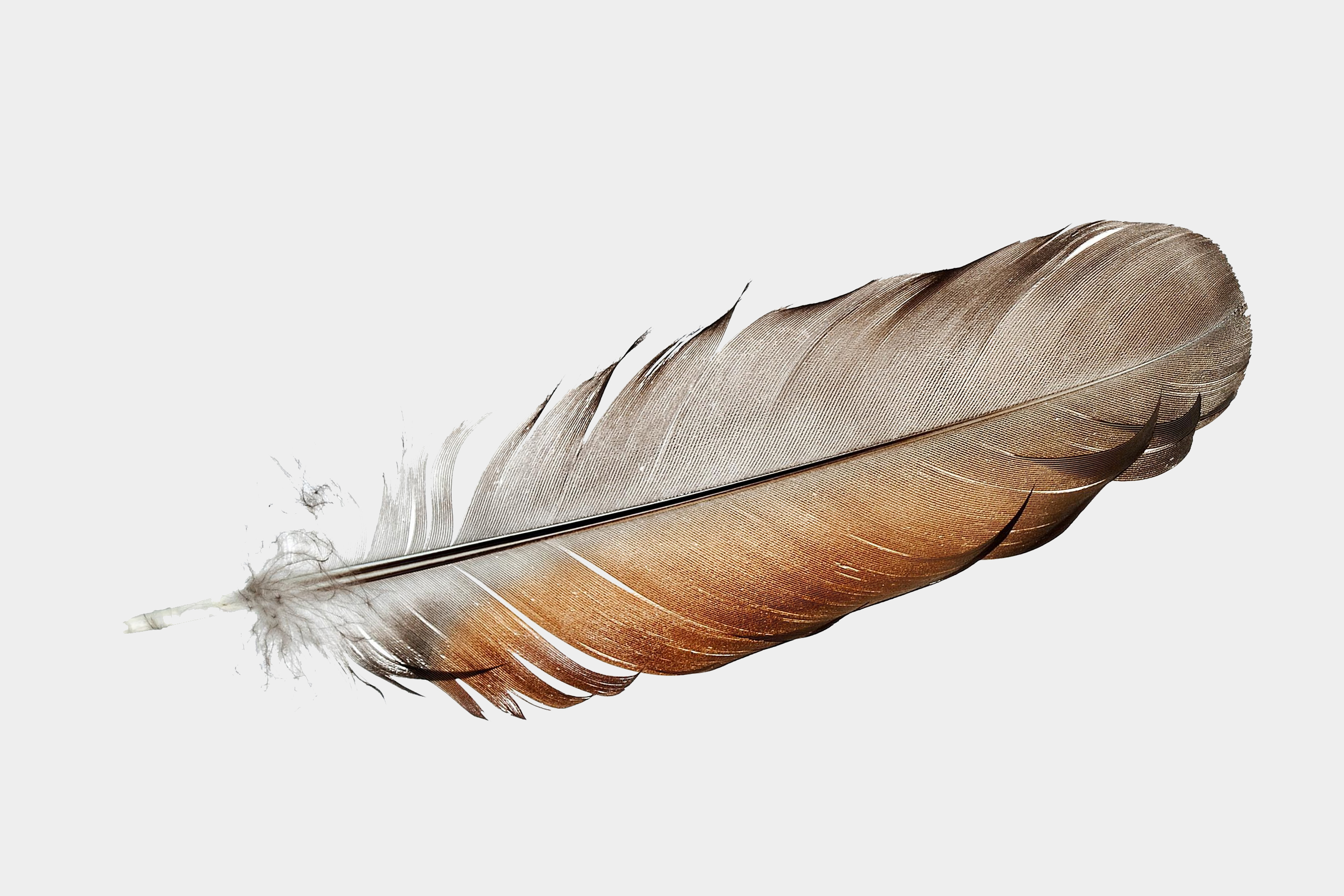
SMILE: Gentle as a feather
The overall surgical experience with SMILE is very gentle and this significantly reduces patient anxiety by allaying the fear of surgery.
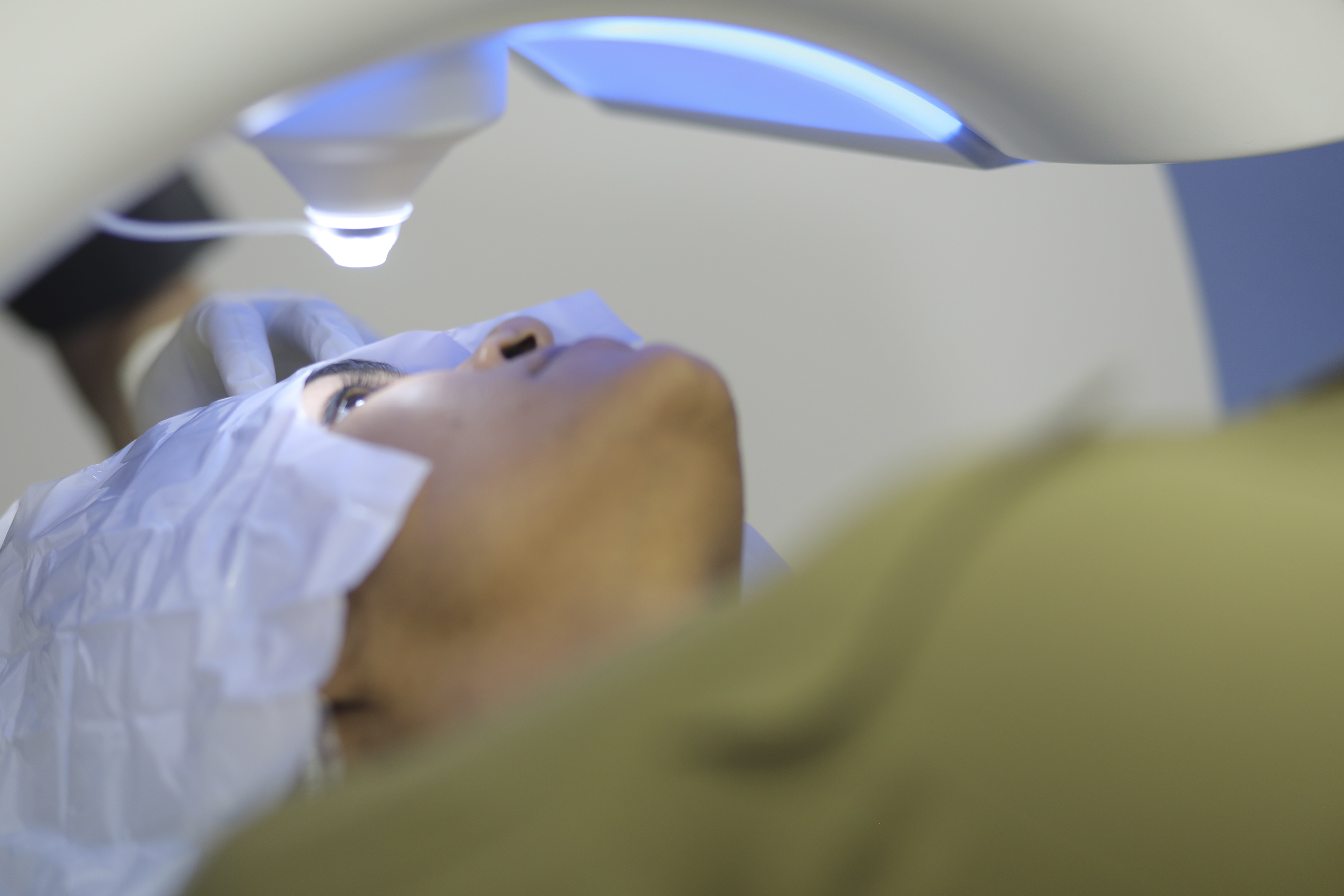
THINK OF SMILE AS PRK WITHOUT THE DISCOMFORT AND LASIK WITHOUT A FLAP.
1ST GENERATION PRK : PRK
Surface Ablation Surgery
With PRK, the vision correction is made directly to the surface of the cornea. However, recovery generally takes longer compared to other procedures and can be accompanied by discomfort. Patients experience a difference in their vision within a few weeks.
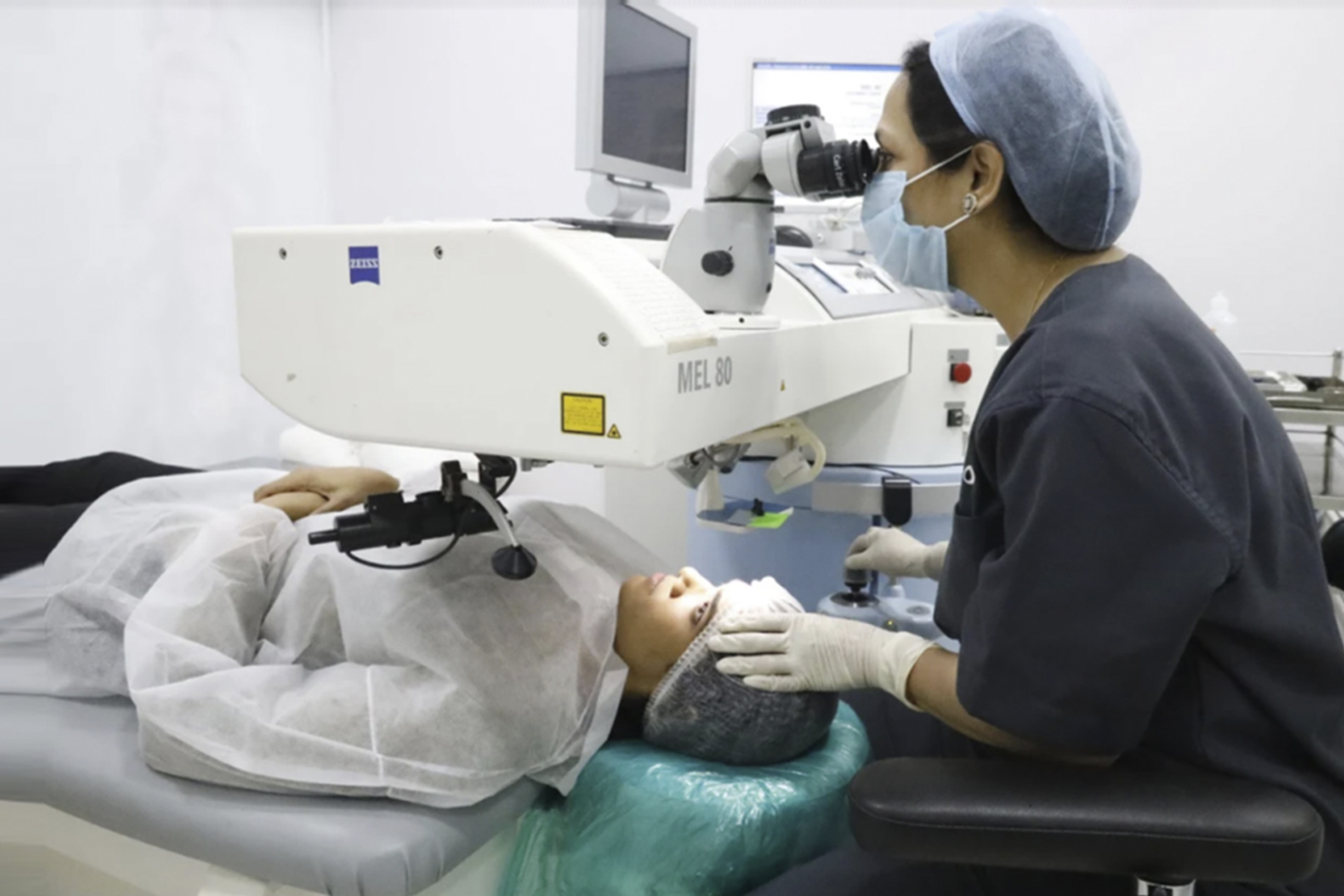
2nd Generation : LASIK
Flap Surgery
With LASIK or Femto-LASIK, the vision correction is made in the deeper layers of cornea after creating a flap. Until recently, It used to be the most popular laser vision correction procedure and is renowned for producing excellent results
Patients generally have quick visual recovery with few complications post-surgery. However, there is a higher incidence of dry eye when compared with SMILE.

3rd Generation : SMILE
Minimally Invasive, Flapless Surgery
SMILE is a minimally invasive and gentle surgical procedure that requires no flap. As a result, the outer corneal layer of the eye remains largely intact. Recovery with SMILE is also fast, with a lower incidence of post-surgery problems such as flap complications, infections, dry eye or epithelial ingrowth.
FREQUENTLY ASKED SMILE
No. You will receive numbing eye drops to improve your comfort during the procedure.
The femtosecond laser procedure takes less than 30 seconds to create the lenticule and the incision while the entire treatment takes about 5-7 minutes per eye.
Your vision will initially be blurry but will begin to clear over the following 24 hours. You may have some irritation in the eyes for the first 4-5 hours. It is best to rest for the first 4-5 hours after which you may resume normal activities. You will be given postoperative medication and protective glasses to wear over your eyes before leaving the clinic. You will also be given eye shields to put over the eyes overnight when you sleep, to protect the eyes for the first day.
Typically, the SMILE incision heals within 5-6 hours and most patients are comfortable by then. We generally allow patients to discontinue all precautions by the next day. Overall recovery can take 6-12 weeks.
Some people who have laser eye surgery will still need to wear glasses or contact lenses to achieve optimum vision. However, their natural eyesight should improve drastically. It’s important to remember that laser eye surgery won’t prevent the occurrence of age-related vision problems and reading glasses will eventually be needed.
Patients love the possibility of LASIK-like visual recovery without the need for a cornea flap and safety like PRK without the pain. The single most important reason to have SMILE over LASIK is superior long-term safety. The advantages of SMILE include:
a. Gentle and comfortable surgical experience
b. Superior long-term safety
c. Superior intraoperative safety
d. Results comparable to or better than LASIK
e. Smaller incision with faster healing
f. rMinimal precautions
g. Maximum sparing of corneal nerves due to small incision
h. Lower risk of dry eye
i. Better preservation of corneal architecture
j. No risk of flap related problems during surgery or after even when engaging in extreme sports
Before undertaking any procedure it is important to understand the associated risks and limitations so you can make an informed decision. We understand the concerns and hold your safety as the highest priority. After a complete evaluation, we will discuss any specific concerns with you and also address any of your concerns. In the last decade, our most frequently encountered risk was that of the procedure being interrupted due to a sudden movement. If this were to occur, the procedure can be stopped and restarted either the same day or another day without any loss of vision. Other procedure related risks maybe similar to LASIK such as infection or inflammation, undercorrection, overcorrection, glare or haloes etc. Overall, in our experience SMILE has the lowest risk of problems compared to other vision correction procedures.
As all femtosecond procedures, SMILE also is associated with significant royalty fees to be paid to the laser company in addition to other surgical charges. Though the cost of SMILE is higher than LASIK, the benefits far outweigh the difference in cost. Further, when compared internationally, the cost for SMILE is amongst the lowest in India.
The recovery after SMILE is generally fast. We expect most patients to return to work the next day after surgery. Most precautions can be discontinued the next day itself including washing the face, washing the eyes, shampoo, driving, sports, swimming eye makeup and face makeup.
Schedule Your Consultation & Comprehensive Exam
Find out if you are a candidate from the Vision Correction Specialist.


 +917738273937
+917738273937